Peak Age of Information Optimization in Cell-Free Massive Random Access Networks
Abstract
1. Introduction
2. System Model
3. Peak Age of Information
3.1. Successful Transmission Probability in Single-AP Scenarios
3.2. Successful Transmission Probability in Multi-AP Networks
3.3. Average PAoI
4. Optimization of Average Peak Age of Information
4.1. Global PSO Algorithm Based on Full Topology Information
| Algorithm 1 PAoI Optimization Algorithm Based on Global PSO |
| ,
, Imax. |
| 1: for each particle k = 1 to K do |
| 2: |
| 3: |
| 4: according to (10) |
| 5: end for |
| 6: according to (13) and (10) |
| 7: Set the initial iteration value i = 1 |
| 8: do |
| 9: for each particle k = 1 to K do |
| 10: according to (12) and (14) |
| 11: |
| 12: |
| 13: |
| 14: Calculate the PAoI according to (10) |
| 15: according to (13) and (10) |
| 16: end for |
| 17: according to (13) and (10) |
| 18: i = i + 1 |
| 19: end for |
4.2. Local PSO Algorithm Based on Neighboring Topology Information
| Algorithm 2 PAoI Optimization Algorithm Based on Local PSO |
| ,
, Imax. |
| 1: for each particle k = 1 to K do |
| 2: |
| 3: |
| 4: end for |
| 5: according to (13) |
| 6: Set the initial iteration value i = 1 |
| 7: do |
| 8: for each particle k = 1 to K do |
| 9: for each element g = 1 to G do |
| 10: according to (14) and (17) |
| 11: |
| 12: |
| 13: |
| 14: Calculate the PAoI according to (16) |
| 15: according to (13) and (16) |
| 16: end for |
| 17: according to (13) |
| 18: i = i + 1 |
| 19: end for |
| 20: end for |
5. Simulation Results and Analysis
5.1. Validation of Theoretical Analysis
5.2. Convergence Analysis
5.3. Algorithm Effectiveness and Performance Comparison
6. Conclusions
Author Contributions
Funding
Institutional Review Board Statement
Data Availability Statement
Conflicts of Interest
Abbreviations
| CF-RAN | Cell-Free Radio Access Network |
| AP | Access Point |
| mMTC | massive Machine-Type Communication |
| AoI | Age of Information |
| PAoI | Peak Age of Information |
| PSO | Particle Swarm Optimization |
| CPU | Central Processing Unit |
| MTD | Machine-Type Device |
| SDT | Small Data Transmission |
| FCFS | First-Come-First-Served |
References
- Dala Pegorara Souto, V.; Dester, P.S.; Soares Pereira Facina, M.; Gomes Silva, D.; de Figueiredo, F.A.P.; Rodrigues de Lima Tejerina, G.; Silveira Santos Filho, J.C.; Silveira Ferreira, J.; Mendes, L.L.; Souza, R.D.; et al. Emerging MIMO technologies for 6G networks. Sensors 2023, 23, 1921. [Google Scholar] [CrossRef] [PubMed]
- Apiyo, A.; Izydorczyk, J. A Survey of NOMA-Aided Cell-Free Massive MIMO Systems. Electronics 2024, 13, 231. [Google Scholar] [CrossRef]
- Taneja, A.; Alqahtani, A.; Saluja, N.; Alqahtani, N. Robust resource control based on AP selection in 6G-Enabled IoT networks. Sensors 2023, 23, 6788. [Google Scholar] [CrossRef] [PubMed]
- Guo, F.; Yu, F.R.; Zhang, H.; Li, X.; Ji, H.; Leung, V.C.M. Enabling massive IoT toward 6G: A comprehensive survey. IEEE Internet Things J. 2021, 8, 11891–11915. [Google Scholar] [CrossRef]
- ETSI TS 38.321. 5G; NR. Medium Access Control (MAC) Protocol Specification. 3GPP: Sophia Antipolis, France, 2022.
- Liang, J.; Chan, T.-T.; Pan, H. Minimizing Age of Collection for Multiple Access in Wireless Industrial Internet of Things. IEEE Internet Things J. 2024, 11, 2753–2766. [Google Scholar] [CrossRef]
- Wu, H.; Tian, H.; Fan, S.; Ren, J. Data age aware scheduling for wireless powered mobile-edge computing in Industrial Internet of Things. IEEE Trans. Ind. Inform. 2021, 17, 398–408. [Google Scholar] [CrossRef]
- Modina, N.; El-Azouzi, R.; De Pellegrini, F.; Menasche, D.S.; Figueiredo, R. Joint traffic offloading and aging control in 5G IoT networks. IEEE Trans. Mob. Comput. 2023, 22, 4714–4728. [Google Scholar] [CrossRef]
- Li, Z.; Zhong, A.; Jiang, Y.; Tang, T.; Wang, R. A bound on peak age of information distribution. In Proceedings of the ICC 2023—IEEE International Conference on Communications, Rome, Italy, 28 May–1 June 2023; pp. 88–93. [Google Scholar]
- Chen, H.; Gu, Y.; Liew, S.C. Age-of-Information dependent random access for massive IoT networks. In Proceedings of the IEEE INFOCOM Workshops, Toronto, ON, Canada, 6–9 July 2020; pp. 930–935. [Google Scholar]
- Yavascan, O.T.; Uysal, E. Analysis of slotted Aloha with an age threshold. IEEE J. Sel. Areas Commun. 2021, 39, 1456–1470. [Google Scholar] [CrossRef]
- Xu, K.; Xu, Y.; Wang, X.; Wang, X. A Hybrid Collaborative Learning for Age of Information Minimization in Massive Access. IEEE Trans. Veh. Technol. 2025, 74, 2739–2752. [Google Scholar] [CrossRef]
- Jeong, M.; Seo, G.; Hwang, E. Age of Information Optimization by Deep Reinforcement Learning for Random Access in Machine Type Communication. In Proceedings of the 2022 IEEE International Conference on Big Data (Big Data), Osaka, Japan, 17–20 December 2022; pp. 6670–6672. [Google Scholar]
- Zhou, M.; Yuan, X.; Yuan, P.; Zhang, J.; Zhao, X.; Xie, M. Joint access control and pilot design to minimize average AoI in cell-free massive MIMO system with grant-free random access. IEEE Internet Things J. 2025, 12, 14876–14885. [Google Scholar] [CrossRef]
- Waraiet, A.; Cumanan, K.; Rehan, S.; Al-Shami, T.; Grace, D.; Burr, A. AoI minimization for uplink cell-free networks: A DRL-Based multi-objective approach. In Proceedings of the 2024 IEEE Middle East Conference on Communications and Networking (MECOM), Abu Dhabi, United Arab Emirates, 17–20 November 2024; pp. 315–320. [Google Scholar]
- Song, M.; Shan, H.; Cheng, Y.; Zhuang, W.; Li, X.; Zhang, Q.; He, X. On the spatio-temporal analysis and optimization of AoI in cell-free IIoT networks. IEEE Trans. Wirel. Commun. 2024, 23, 16421–16436. [Google Scholar] [CrossRef]
- Yu, B.; Bao, Y.; Huang, Y.; Zhan, W.; Liu, P. Modeling and throughput optimization of multi-gateway LoRaWAN. IEEE Access 2023, 11, 142940–142950. [Google Scholar] [CrossRef]
- Gross, D.; Shortle, J.F.; Thompson, J.M.; Harris, C.M. Fundamentals of Queueing Theory, 3rd ed.; John Wiley & Sons: Hoboken, NJ, USA, 2018. [Google Scholar]
- Zhan, W.; Dai, L. Access Delay Optimization of M2M Communications in LTE Networks. IEEE Wirel. Commun. Lett. 2019, 8, 1675–1678. [Google Scholar] [CrossRef]
- Kennedy, J. The particle swarm: Social adaptation of knowledge. In Proceedings of the IEEE International Conference on Evolutionary Computation, Indianapolis, IN, USA, 13–16 April 1997; pp. 303–308. [Google Scholar]
- Gao, T.; Tang, Q.; Li, J.; Zhang, Y.; Li, Y.; Zhang, J. A particle swarm optimization with Lévy flight for service caching and task offloading in edge-cloud computing. IEEE Access 2022, 10, 76636–76647. [Google Scholar] [CrossRef]
- Kennedy, J.; Eberhart, R. Particle swarm optimization. In Proceedings of the International Conference on Neural Networks, Perth, Australia, 27 November–1 December 1995; Volume 4, pp. 1942–1948. [Google Scholar]
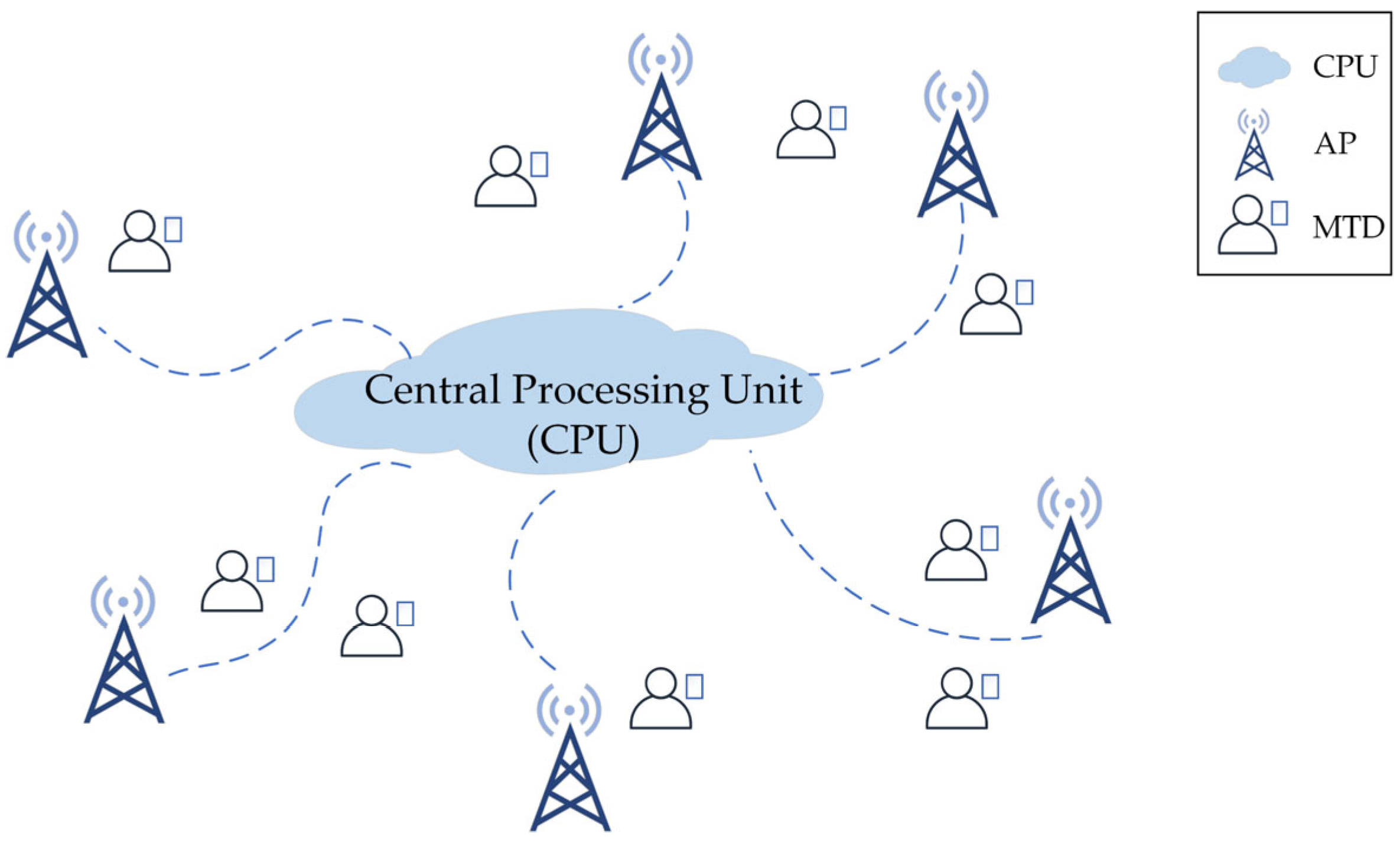

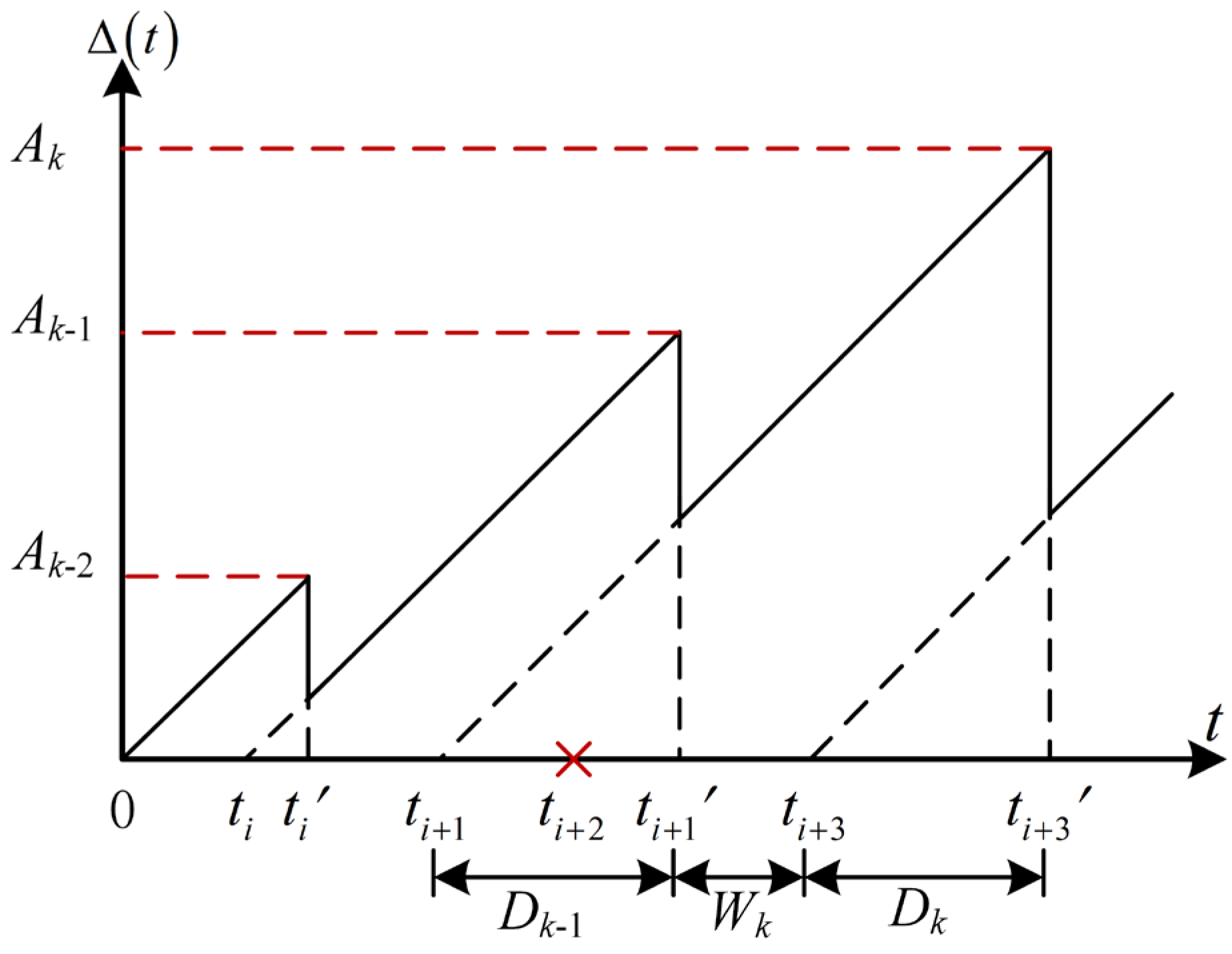
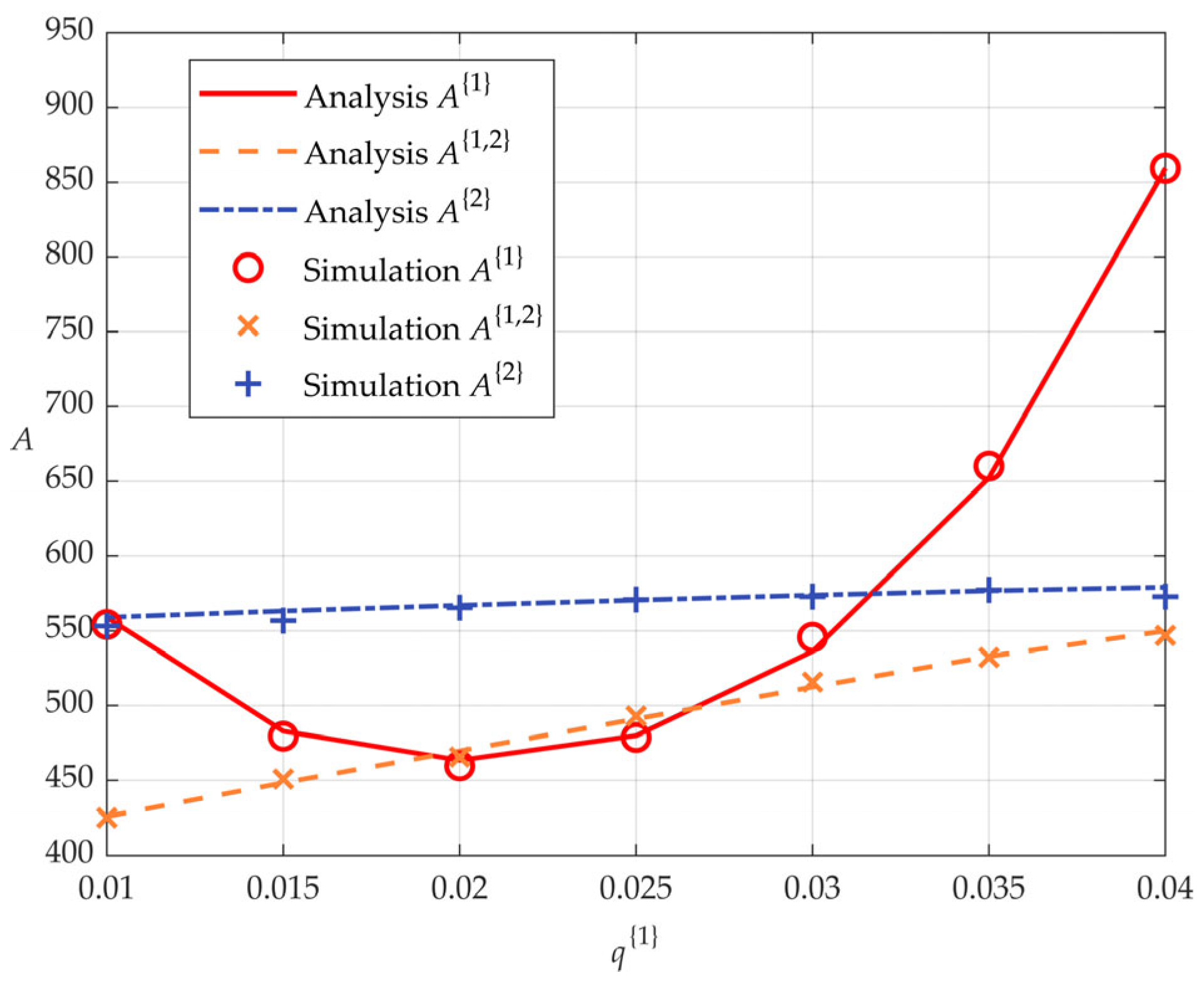


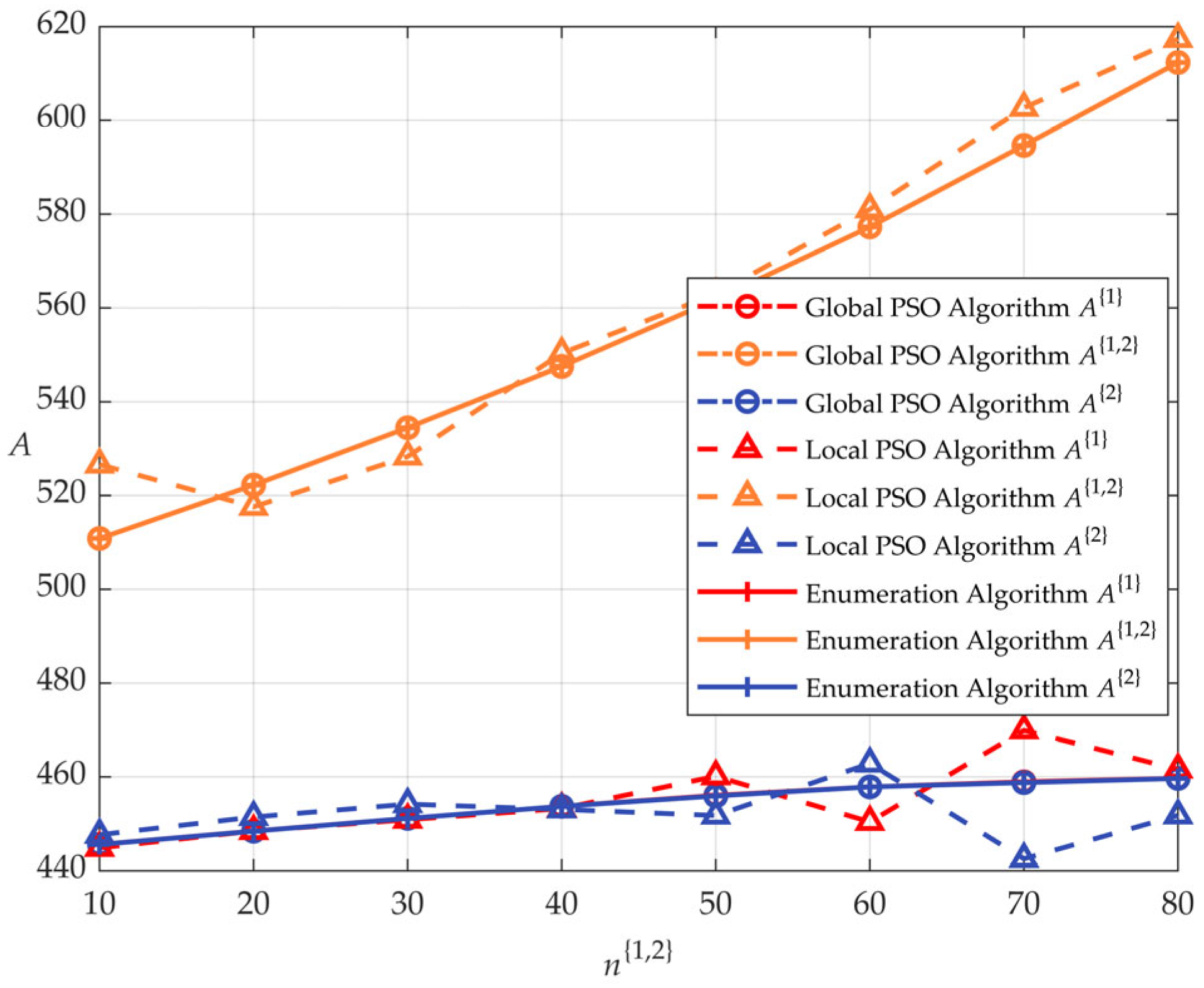
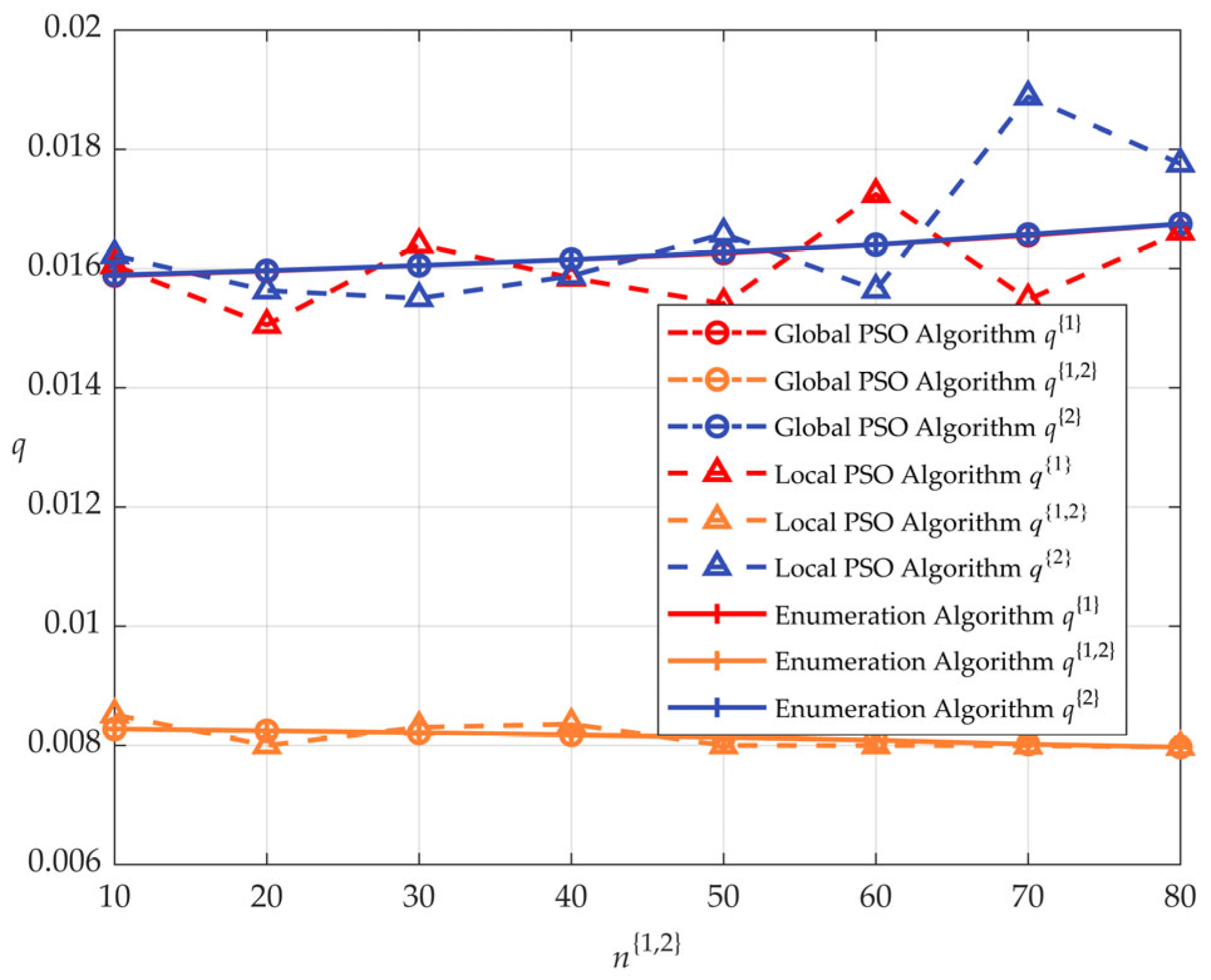
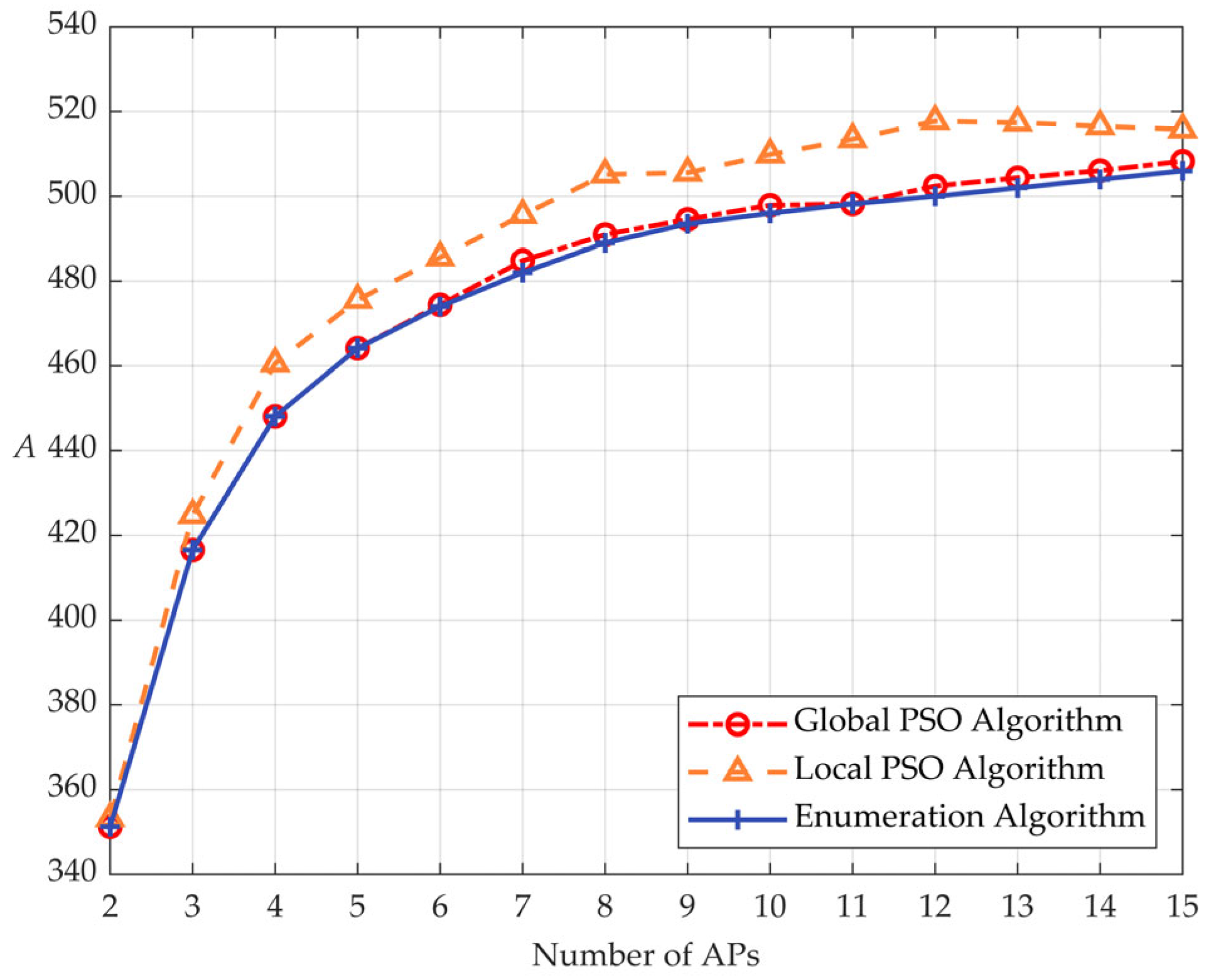
| Parameters | Values |
|---|---|
| Number of particles K | 50 |
| Self-control factor | 0.003 |
| Group control factor | 0.8 |
| Position range | (0, 0.1) |
| Velocity range | (−0.002, 0.002) |
| (0.4, 2) | |
| Maximum iterations Imax | 100 |
Disclaimer/Publisher’s Note: The statements, opinions and data contained in all publications are solely those of the individual author(s) and contributor(s) and not of MDPI and/or the editor(s). MDPI and/or the editor(s) disclaim responsibility for any injury to people or property resulting from any ideas, methods, instructions or products referred to in the content. |
© 2025 by the authors. Licensee MDPI, Basel, Switzerland. This article is an open access article distributed under the terms and conditions of the Creative Commons Attribution (CC BY) license (https://creativecommons.org/licenses/by/4.0/).
Share and Cite
Zhao, Z.; Huang, Y.; Zhan, W. Peak Age of Information Optimization in Cell-Free Massive Random Access Networks. Electronics 2025, 14, 2714. https://doi.org/10.3390/electronics14132714
Zhao Z, Huang Y, Zhan W. Peak Age of Information Optimization in Cell-Free Massive Random Access Networks. Electronics. 2025; 14(13):2714. https://doi.org/10.3390/electronics14132714
Chicago/Turabian StyleZhao, Zhiru, Yuankang Huang, and Wen Zhan. 2025. "Peak Age of Information Optimization in Cell-Free Massive Random Access Networks" Electronics 14, no. 13: 2714. https://doi.org/10.3390/electronics14132714
APA StyleZhao, Z., Huang, Y., & Zhan, W. (2025). Peak Age of Information Optimization in Cell-Free Massive Random Access Networks. Electronics, 14(13), 2714. https://doi.org/10.3390/electronics14132714





